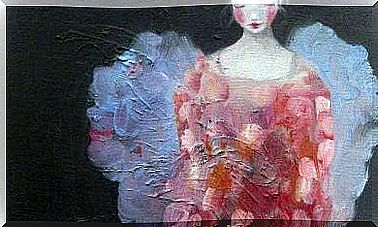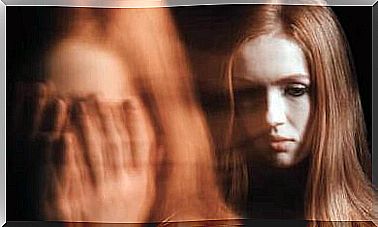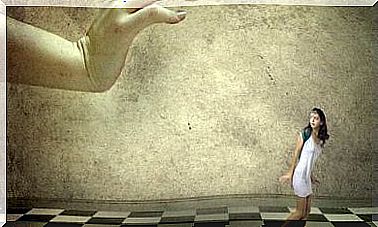Crimson Peak: Darkness Of Passions
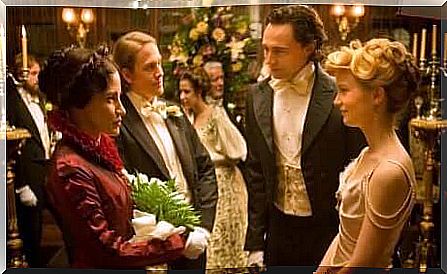
For anyone who is already familiar with Guillermo del Toro’s cinema, it is hardly surprising to find themselves in front of a film like Crimson Peak (2015). The director clearly sets out his intentions: the claim of the monsters. Extraordinary beings, ghosts and monsters make up the filmography of this Mexican director. They are not, however, presented as scary or vengeful.
Appearance can be terrifying, but it is nothing more than that: a mere appearance. The real monsters live with us on a daily basis, they populate cities and can be adorned with the finest finery.
Del Toro draws on influences from horror cinema and Gothic novel. But also of these spaces whose past seems never to have dissipated. However, this is not a film that seeks to frighten the viewer; at least not through the supernatural.
Critics have been extremely varied: some pointed to the magic of its atmosphere, others cataloged the film as “light”. The public has not been so sympathetic. Even though the film was rated well, it failed to fully shine.
The problem may have been that many expected to see a movie about haunted mansions, full of terror. A film which, in short, would have followed the traditional trail of the genre. However, in reality, Crimson Peak follows to the letter all the conventionalisms of horror. While reinventing them and bringing us a new point of view.
It is not the ghosts that are scary, and the terror does not reside in the hereafter… The real horror is found among the living, in the more human and frightening passions. Del Toro joins the romantic tradition of exploring the depths of the human mind. The secrets and mysteries that envelop a society that has already sunk into decadence.
In an absolutely dismal mansion that appears to be alive, breathing and even bleeding, the Mexican filmmaker prints his stamp to set up a story that could perfectly well be inspired by a romance novel.
” loading = “lazy” width = “500” height = “281” src = “https: / /www.youtube.com/embed/vu03lqAwKqE?feature=oembed “frameBorder =” 0 “allow =” accelerometer; autoplay; encrypted-media; gyroscope; picture-in-picture “allowfullscreen =” “]
Crimson Peak : passions
The story begins in New York at the end of the 19th century. Edith is the young daughter of a great entrepreneur. She is not a conventional woman; it does not fit into the mold of its time.
Edith aspires to be a writer but does not wish to write romantic comedies and dramas related to women. Rather, she wants to write those stories that have pursued her since her childhood: ghost stories. Edith has always believed in ghosts. She even saw them and was able to verify that in reality they were not going to hurt her.
Del Toro has always relied on a strong presence of women in his filmography. He always wanted to get rid of their secondary roles, of this image of “ladies in distress”. He gives them strength, an essential presence and he makes them responsible for their actions and their destiny. Edith will face her father when she meets Sir Thomas, a young Briton whom she will fall in love with.
Crimson Peak mocks the conventionalism of the high society of the XIX, the morality of the time. He shows us a young woman whom we could perfectly see years later. This description of high society, this light but effective criticism, which unites with the gender roles and the marriages of convenience of the time, reminds us, in a way, of the literature of Jane Austen.
The family home
After the death of her father, Edith left for England with Sir Thomas, in the latter’s family home, Allerdale Hall. In Allerdale, they will live with Lucille, Sir Thomas’ strange sister. These two characters have promised to restore the splendor of yesteryear to the ruined mansion.
Allerdale Hall had been, in its time, a place that shone with its own light, a prosperous place where the well-to-do and aristocratic family of Thomas and Lucille lived. However, there is now only a sad facade.
The interior of the house is absolutely freezing. The ruins have collapsed the roof, and the drafts sound like whispers from the afterlife. This house seems alive, blood emanates from its floor, its walls breathe. The red clay that Sir Thomas hopes to use tints the snow the color of blood. Edith will have to get used to this new life, to a house that seems to cry out to her to leave, to flee as far as possible.
Crimson Peak: Lucille
From the start, we know that something strange is happening with Lucille and Sir Thomas. The plot does not lie in the quest for an assassin or a ghost. The ghosts appear throughout the film, they guide Edith and communicate with her; the intrigue lies in the passions, in the complexity and the obscure past of the brother and the sister. Power, ambition, love, incest, life and death… it all comes together in Crimson Peak.
The two women will be the most powerful presences, and especially Lucille, who shines thanks to the spectacular interpretation of Jessica Chastain. Metaphors abound from the start. The colors thus take on a very special importance, the scarlet red of Lucille’s dress contrasting with the pallor of Edith’s.
The passions are manifested through this color, scarlet red, the color of blood, of the forbidden, of the erotic. The green tones evoke the obscene, the impure character of the place.
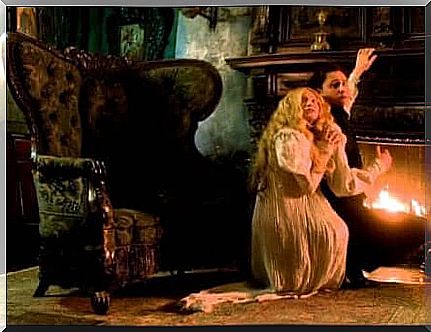
Violence, love and blood
Horror merges with love in Crimson Peak, nothing scares more than human passions, nothing terrorizes more than a lover and obsessive madman. Incest lurks behind the thin walls of Allerdale Hall. The past has been tortured and fails to break away from this dark place.
Edith explores the endless hallways, enters a terrifying elevator and descends into hell, where it all began, where blood emanates from the walls.
The construction of the film is almost metaphorical. The house itself is a parallelism of these passions which end up destroying the human being, which take him on the path of violence, of rage, of desire. Love, eroticism and violence seem to go hand in hand. The plot moves away from the terror engendered by ghosts to present them to us as friends, allies.
Romanticism
This love and violent triangle composed by the three protagonists reminds us a lot of the literature of romanticism, but also of the crimes of passion of Agatha Christie. Hitchcock’s influence is just as palpable, from the first minutes of the feature film.
We are therefore in front of a film which takes all the influences of the filmmaker, brings them together and arranges them to tell a story of enchanted houses and destructive passions. Violence does not disturb: it is aesthetic, the blood melts in the snow creating poetry.
It’s probably not the Mexican director’s best film and it falls far behind others, like Pan’s Labyrinth, but Del Toro manages to do what he wanted. He manages to make the magic and the fantasy fit together in this gothic horror film.
In a world where we can no longer believe in fairy tales, Crimson Peak brings us this dose of nostalgia, of romanticism. United to novelty and current affairs, Edith takes the reins of this story which, if it had been written in the 19th century, would have been interpreted by a man.
Del Toro constructs an entertaining and captivating film, which is based on the tragedy of a place plunged into absolute decadence.

